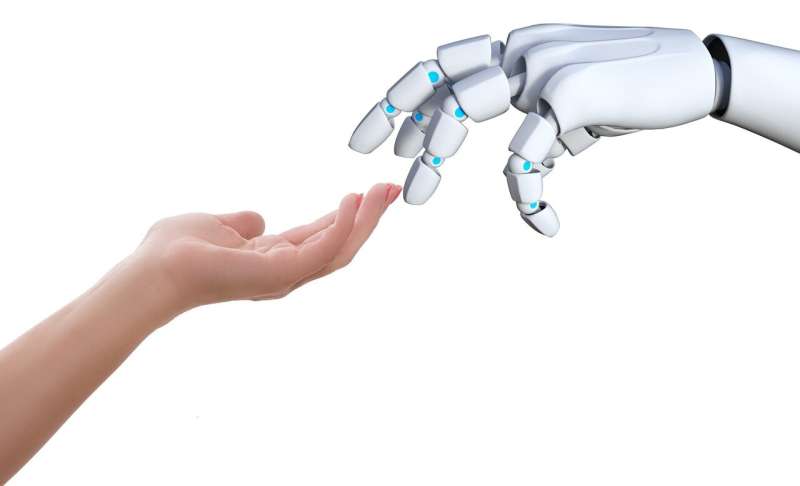Long-wave infrared detector enables non-contact human-machine interaction

The thermal radiation emitted by the human body is predominantly in the long-wave infrared region (8–14 μm), which is characterized by low photon energy and low power intensity.
Recently, a research team led by Associate Prof. Lu Xiaowei, Prof. Jiang Peng and Prof. Bao Xinhe from the Dalian Institute of Chemical Physics (DICP) of the Chinese Academy of Sciences (CAS) designed a highly sensitive long-wave infrared detector that enables low-power non-contact human-machine interaction.
This study was published in Advanced Materials on July 11.
As a type of thermal detector, the photothermoelectric detector is well-known for its broadband spectral response in the uncooled and self-powered operating mode, which involves two separate energy conversion processes: photothermal and thermoelectric conversions.
The commercial photothermoelectric detectors typically employ the thermopile arrangement to multiply the voltage signal and require the complex micro-electro-mechanical systems fabrication technique. When detecting the weak human radiation, an additional acquisition circuit with high signal-to-noise ratio is usually applied due to the small voltage signal (around tens or hundreds of microvolts).
In this work, the researchers designed a novel thermopile based on the SrTiO3-x/CuNi heterostructure.
On the one hand, this heterostructure synergistically coupled the high electrical conductivity of CuNi alloy with the high Seebeck coefficient of SrTiO3-x. On the other hand, this heterostructure exhibited broadband optical absorption ability, due to the combination of free carrier absorption and phonon resonance absorption.
Benefiting from these features, the SrTiO3-x/CuNi-based thermopile exhibited high sensitivity to human radiation. The output signal level reached up to 13 mV, with the noise voltage being 10 nV/Hz1/2. A thermopile array was further constructed to implement the noncontact real-time recognitions of hand gestures, Arabic numbers and alphabet letters.
"This work offers a reliable strategy to integrate the human radiation into noncontact human-machine interaction, which may play vital roles in certain human-machine interaction fields where hygiene and security become crucial concerns," said Prof. Jiang.
More information: Xiaohan Guo et al, SrTiO 3 /CuNi‐Heterostructure‐Based Thermopile for Sensitive Human Radiation Detection and Noncontact Human–Machine Interaction, Advanced Materials (2022). DOI: 10.1002/adma.202204355


















